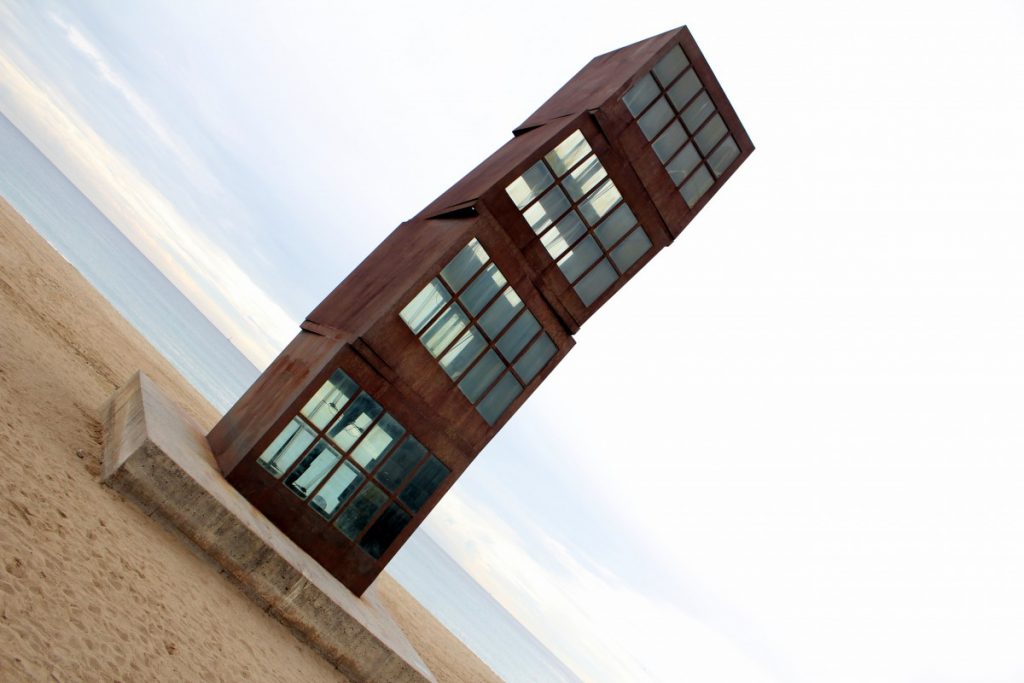One of the most significant milestones in modern history, both for Barcelona and Spain as a whole, was the 1992 Olympic Games. This international event, besides bringing the world of international sport together at that time, was an opportunity to put Barcelona firmly on the map and showcase its first-rate artistic and cultural prowess like never before.
Taking full advantage of the opportunity to shine on the world stage, numerous sculptures representing various currents of contemporary art at the time were erected along the city’s coastline, all fresh out of the minds of some of the world’s most renowned artists. Around Barceloneta Beach, visitors to the city can still admire their creations to this day, which now form a key part of the city’s artistic heritage.
A room where it always rains
This installation is the work of artist Juan Muñoz and can be found on Plaça del Mar. It is made up of a gallery of railings where five bronze figures ‘live’ within. The artwork is located under three large trees that provide permanent shade. However, as the name suggests, part of the design was that the construction would ‘rain’ constantly, and while the artist’s premature death meant his work was never finished, it can now be fully admired adjacent to Barceloneta beach.
Art in Barceloneta: the wounded shooting star
The work of German sculptor Rebecca Horn, this piece was designed as a tribute to Barcelona’s most famous fishing district, as well as a way of ‘washing the face’ of a district that was, at the time, a rather troubled area. Created as a link between the city and the sea, it represents a star that has fallen from the heavens made up of four steel and glass cubes, stacked asymmetrically to a height of ten metres. Its characteristic shape has led everyone to refer to it as ‘los cubos’ over the years, and it has quickly become one of the most famous symbols of the city.
Crescendo Appare
Although normal procedure when admiring any sculpture is to crane your neck upwards, in order to really appreciate Crescendo Appare by Italian artist Mario Merz, you have to look down at the ground on Paseo Joan de Borbó. Because this particular installation consists of numerous windows embedded into the ground and protected by armoured glass. Inside these holes, you’ll find huge red neon lights, representing the numbers of the Fibonnacci mathematical sequence. Currently, the monument has been extinguished and is showing signs of deterioration. City authorities, who consider it part of the municipality’s heritage, are preparing to start repair and recovery works, with the aim of restoring the artwork to its former glory.
Frank Gehry’s footprint on Barcelona
‘El Pez’ by famous artist Frank Gehry has become one of the indisputable symbols of post-Olympic Barcelona. This great goldfish sculpture seems to float over the Mediterranean. And the sun certainly reflects on the golden scales of this fish-like sculpture that, at 56 metres long and 35 metres tall, seems to want to launch at the beautifully blue Mediterranean Sea from its perch, dominating the maritime façades of the Olympic Port and Barcelona’s many great beaches.














